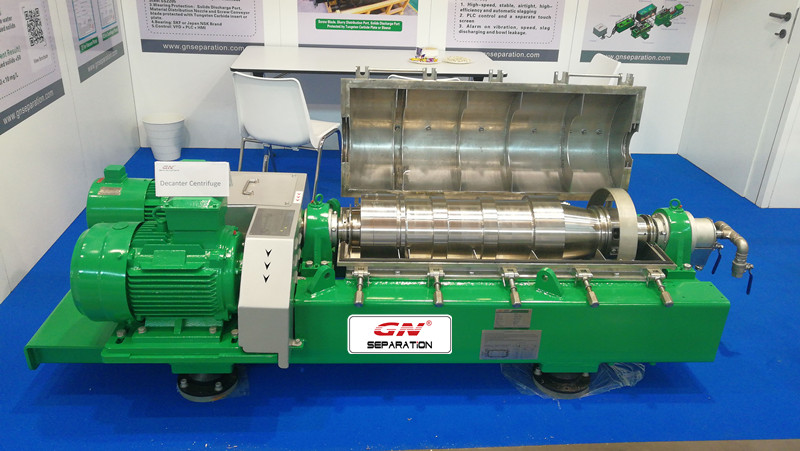Processing any equipment will definitely produce tolerances. The higher the processing accuracy, the smaller the tolerances, but the processing cost is greatly increased. The Decanter centrifuge is designed to use a variety of knowledge to achieve a certain processing error, so that the decanter centrifuge’s vibration is controlled within the normal range. However, if the user uses it improperly, it will destroy this design balance and cause serious accidents. Only when the working speed of the decanter centrifuge is not the critical speed, the rotor can move smoothly. For low-speed decanter centrifuges with a low working speed, the critical speed is generally increased as much as possible, so that the Decanter centrifuge operates below the critical speed. The shaft of this decanter centrifuge is very thick and has high rigidity, which is called a rigid shaft. When the speed requirement is very high, reduce the critical speed as much as possible. The shaft is made thinner and the rigidity is small. It is called a flexible shaft. Modern decanter centrifuges all use flexible shafts.
The critical speed is related to the Decanter centrifuge and the rotor used. A decanter centrifuge can be equipped with several kinds of rotors, so when designing a decanter centrifuge, the tolerance of the decanter centrifuge’s vibration reduction design to various rotors should be considered. The working range of the decanter centrifuge is very wide, from several thousand revolutions/minute to tens of thousands revolutions/minute. The higher the rotation speed at which the decanter centrifuge vibration occurs, the greater the danger. Once the vibration occurs at high speed, the decanter centrifuge should be stopped at the fastest speed down gear, and all personnel should leave the scene quickly to avoid personal injury in the event of shaft breakage. Never cut off the power. Once the power is cut off, the brake (rapid deceleration) will be gone and the rotor will stall very slowly. Accidents are generally caused by improper operation of the decanter centrifuge, such as the rotor is not placed on the main shaft, the rotor cover is not covered, the swinging basket of the rotor is not placed, etc. Modern decanter centrifuges generally have unbalanced protection functions. Once the vibration of the rotor is greater than a certain size when the decanter centrifuge is started, the decanter centrifuge will automatically slow down and stop. The decanter centrifuge with this performance sometimes misses the report and cannot ensure that no accidents will occur.
The screw conveyor machining errors and decanter centrifuge installation errors will cause the conveyor centroid to deviate from the decanter centrifuge main shaft to varying degrees, therefore, vibrations will occur when the rotor rotates, and these vibrations will be inherent to the decanter centrifuge drive system at certain specific speeds The frequency resonates, causing strong vibration of the entire system. The speed at which this phenomenon occurs is called the critical speed. The rotor will cause vibration when rotating at high speed, but the flexible shaft has an “self-aligning effect”. The principle of action is that the rotor produces a disk effect when rotating at high speed, and the elastic reaction force when the flexible shaft bends pulls the rotor that deviates from the geometric centerline of the main shaft back to the geometric centerline of the main shaft, and the vibration disappears. The amount of unbalance existing in the rotor at this time must also have a certain limit, beyond which the vibration will not disappear.

